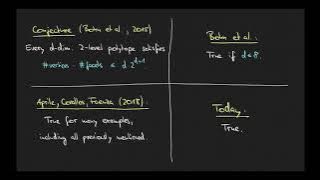Directed graphs | Graph families | Boolean algebra | Application-specific graphs
Implication graph
In mathematical logic and graph theory, an implication graph is a skew-symmetric, directed graph G = (V, E) composed of vertex set V and directed edge set E. Each vertex in V represents the truth status of a Boolean literal, and each directed edge from vertex u to vertex v represents the material implication "If the literal u is true then the literal v is also true". Implication graphs were originally used for analyzing complex Boolean expressions. (Wikipedia).



















